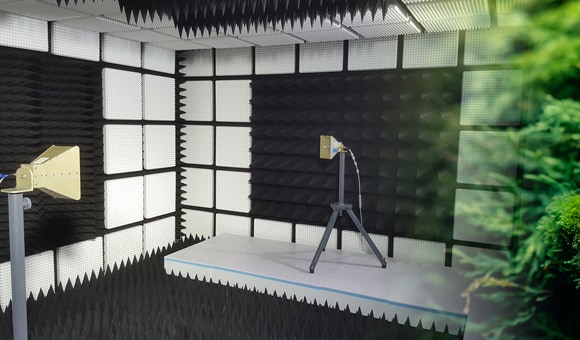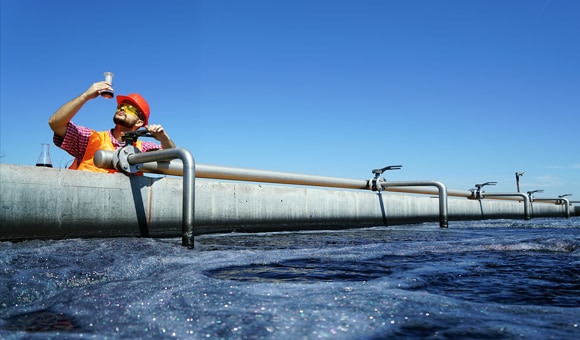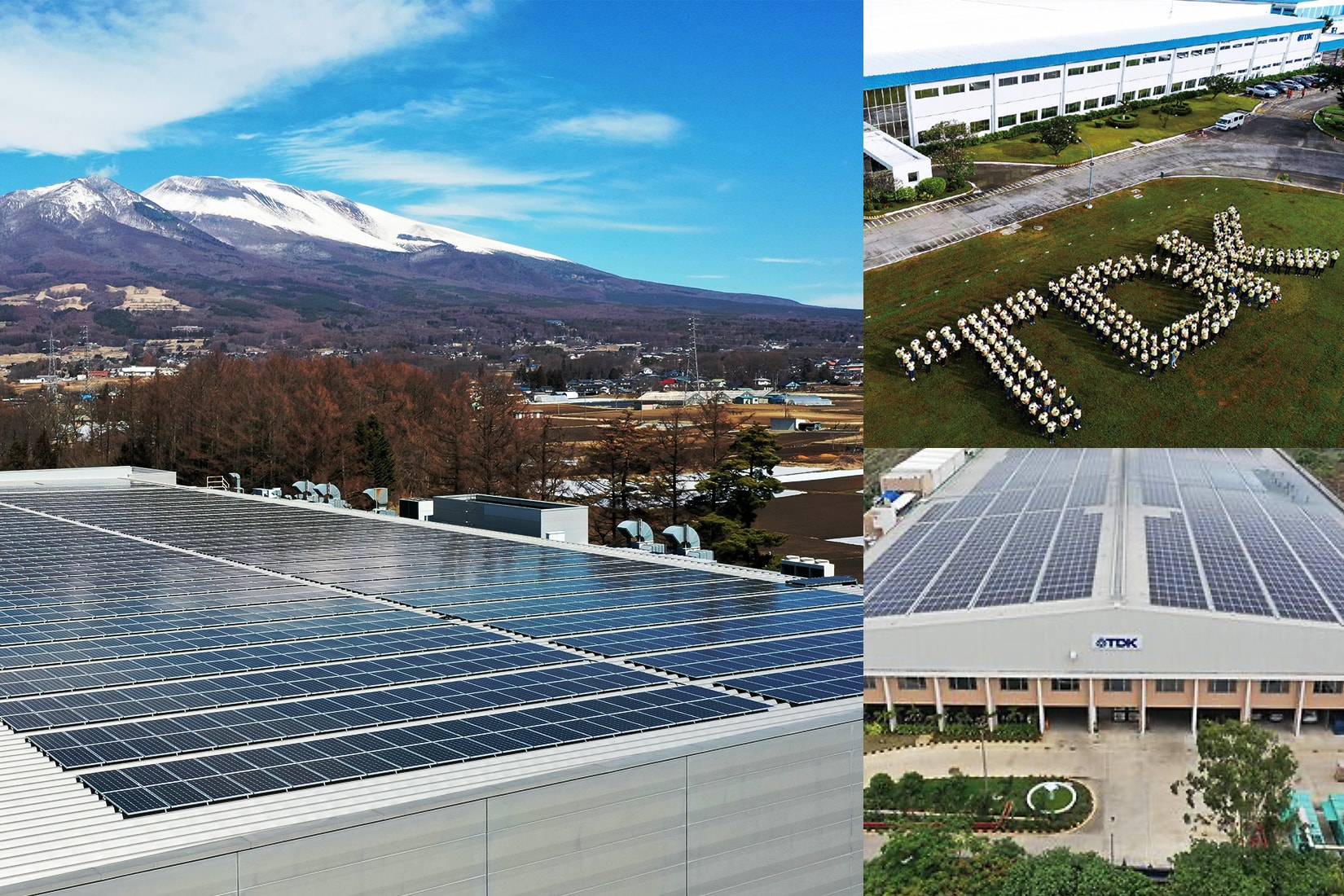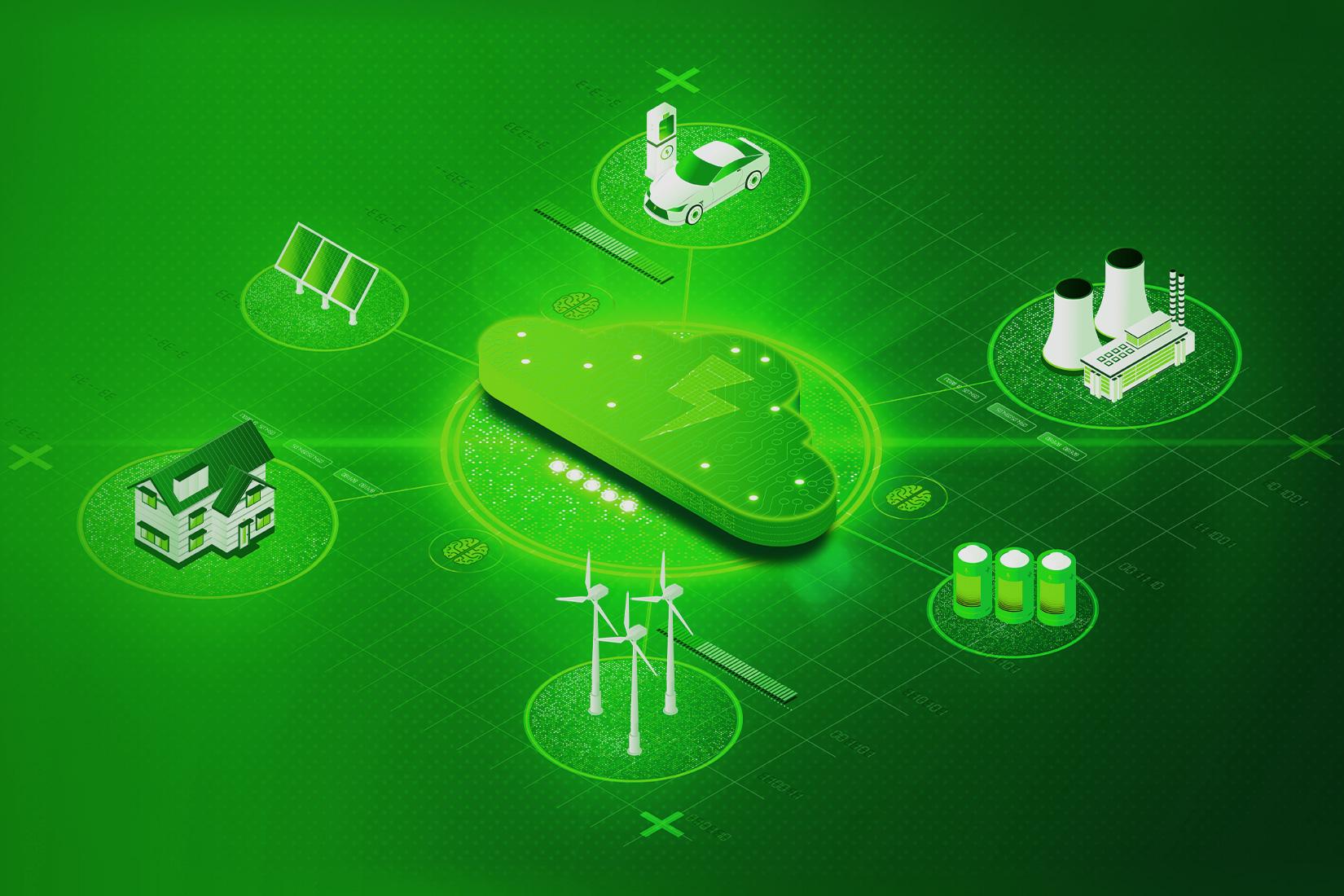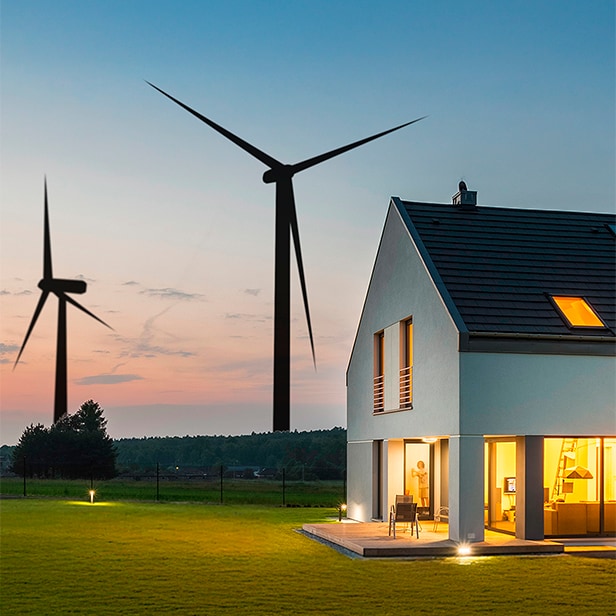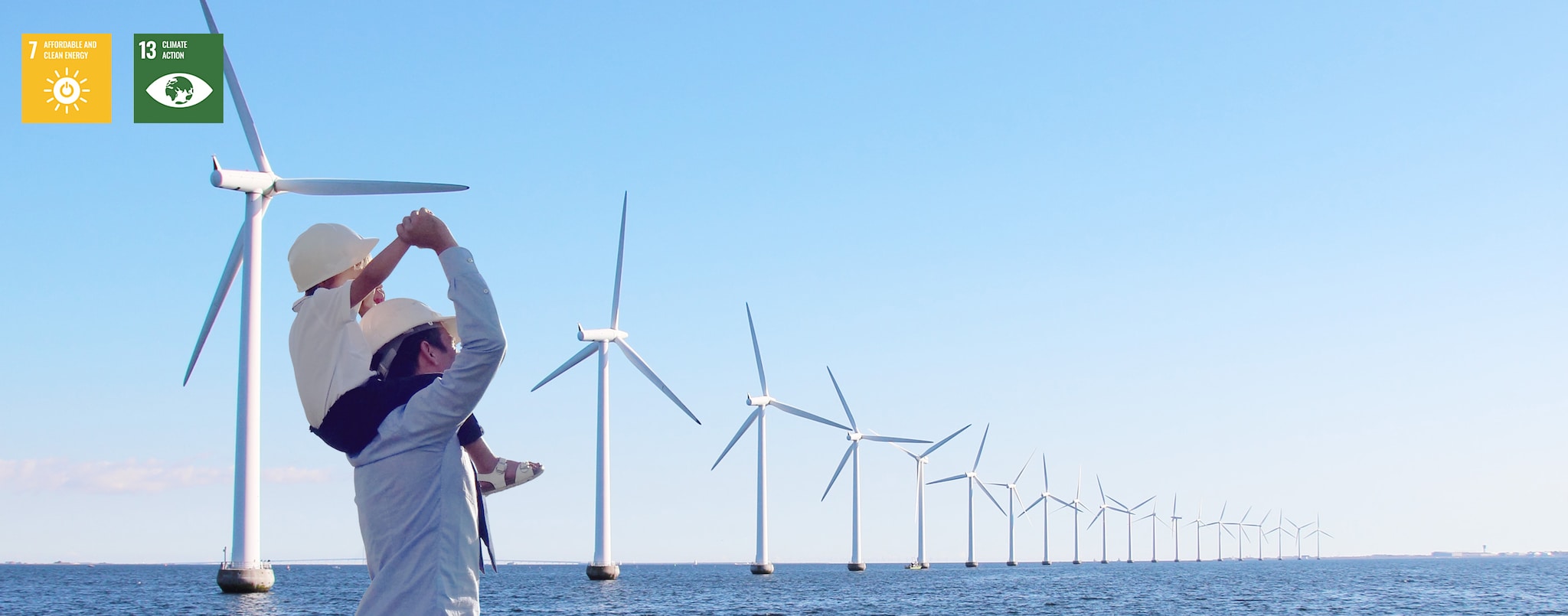
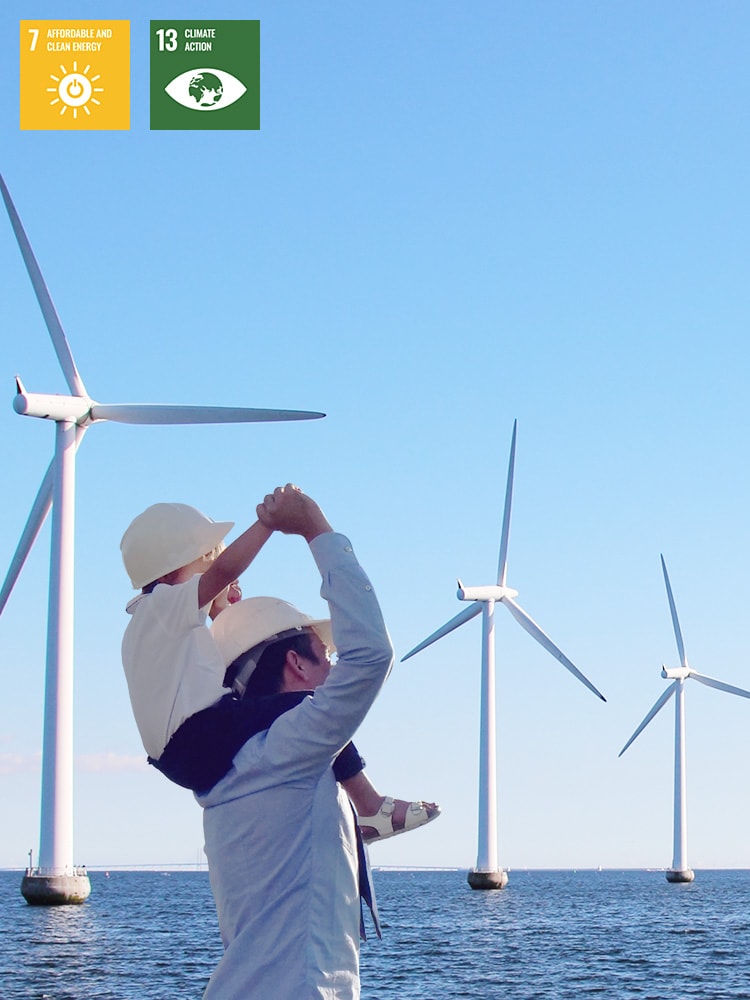
【Sustainability and TDK】
Carbon Neutrality is Supported by Offshore Wind Power.
Discover the Component that Defines its Performance.


Governments, electric utilities and startups worldwide are driving the adoption of renewable energy toward achieving carbon neutrality*1. Particularly in Europe, wind power is spreading rapidly because it can generate large outputs like solar power. This article overviews the present state of wind power, a clean energy source, and takes a close look at magnets—a key determinant of its performance.
▶Related Story:
The Technology Indispensable for Expanding Renewable Energy and Moving Toward a Decarbonized Society
What is offshore wind power generation, emerging all around the world?
Wind power uses large blades to catch the wind and spin rotors to generate electricity. As a clean energy source that burns no fossil fuels nor emits exhaust, wind power generation is growing in many countries. Wind power has become the leading form of renewable energy in Europe, where favorable wind conditions prevail. Many large-scale facilities known as wind farms, which comprise several to several dozen large turbines, have been constructed. Recent years have seen the growing popularity of offshore wind power generation because it can harness steadier winds and accommodate larger generators than on land.
The Green Growth Strategy*2, introduced by the Government of Japan in 2020, lists offshore wind power as an industrial sector vital to achieving carbon neutrality by 2050. The goal is to generate up to 45 million kilowatts of electricity (equivalent to 45 nuclear power plants) from offshore wind power by 2040.
In December 2021, a consortium led by Mitsubishi Corporation Energy Solutions Ltd. was selected as the developer of large-scale offshore wind power operations in three Japanese maritime zones: Noshiro City, Mitane Town and Oga City, Akita Prefecture; Sea area offshore Yurihonjo City, Akita Prefecture (northern and southern sides ); and Sea area offshore Choshi City, Chiba Prefecture. The project is attracting a great deal of attention, as it is poised to become Japan’s first large-scale implantable offshore wind power facility*3, designed to produce a total of 1.7 million kilowatts across the three zones.
Globally, the offshore wind power market is expected to continue growing, reaching 562 gigawatts (562 million kilowatts) by 2040.
Global Outlook of Offshore Wind Power Generation
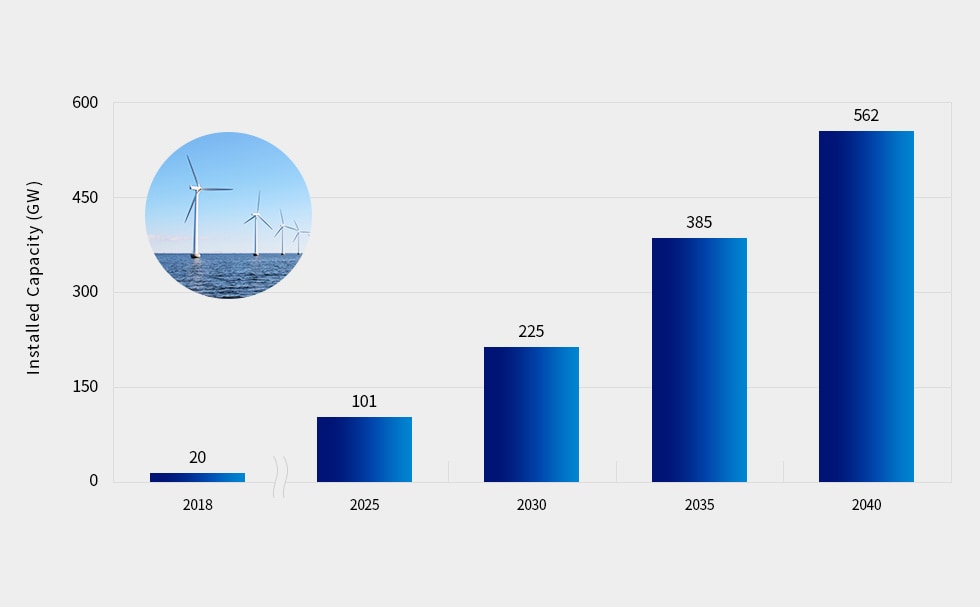
Magnets are critical to the efficiency of wind power generation
The structure of a wind turbine is rather simple: rotor blades pinned atop by a tall tower are spun by the wind, the rotor’s shaft turns a generator, and the generator outputs electricity. The generator is mounted inside an enclosure called the nacelle, attached behind the rotating shaft. Inside the nacelle, electricity is generated by spinning the generator at high speeds. Large wind turbines that output over 100,000 kilowatts are immense structures with towers taller than 150 meters and rotating blades over 200 meters in diameter.

The performance of magnets is critical for raising the efficiency of wind power generators. Since stronger magnets allow generators to produce more power, wind turbines employ powerful neodymium magnets, also found in the drive motors of electric vehicles.
TDK’s magnets underpin wind power generators
TDK leverages its proprietary core technologies—including magnetic material and manufacturing technologies amassed since its founding—to manufacture neodymium magnets featuring the world’s highest levels of residual flux density and magnetic coercivity. Unlike small magnets found in home appliances and electronic devices, wind power generators use large, powerful magnets that can weigh more than 5 tons in a single generator.
TDK has been a pioneering manufacturer of magnets for wind power generators, with an extensive track record of deliveries in Japan and abroad since around 2010. As wind power—a clean energy source—rises in societal prominence, TDK will continue enabling generators with higher efficiency by improving the performance of its magnets even further. TDK, through its proprietary technologies, is contributing to the larger goal of achieving a decarbonized society.
TDK’s Neodymium Magnets
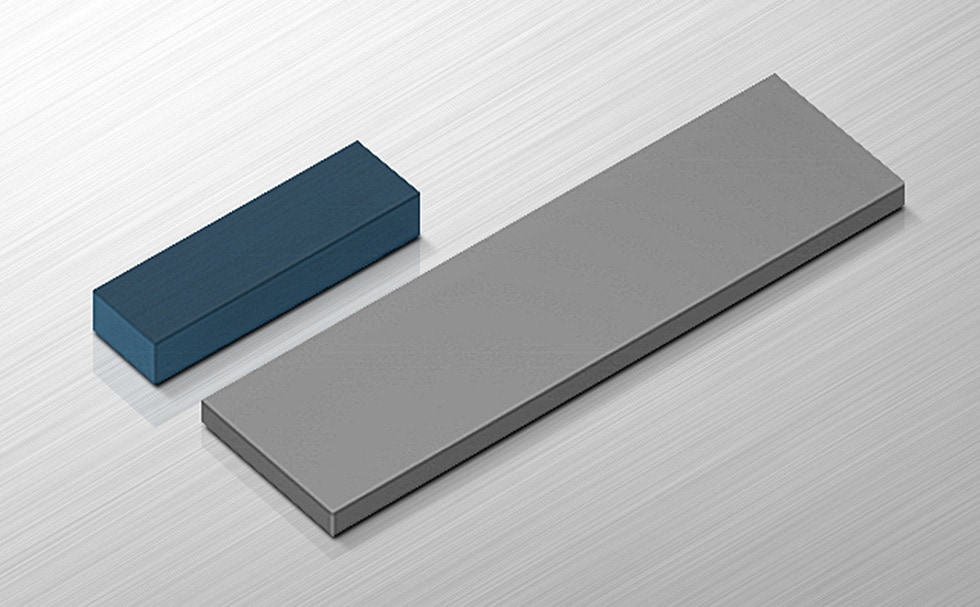
Terminology
- Carbon neutrality: The state net-zero carbon dioxide emissions, achieved by subtracting the amount absorbed by greenery from the amount of emissions.
- Green Growth Strategy: A growth strategy formulated by Japan’s Ministry of Economy, Trade and Industry (METI) to encourage innovation in the private sector and to support endeavors toward a new era in order to achieve carbon neutrality by 2050.
- Implantable offshore wind turbine: A type of offshore wind power generation in which the foundation supporting the turbine is fixed to the seabed. In waters deeper than 50 meters, floating offshore wind turbines are more common, where the turbines are installed on floating structures.



